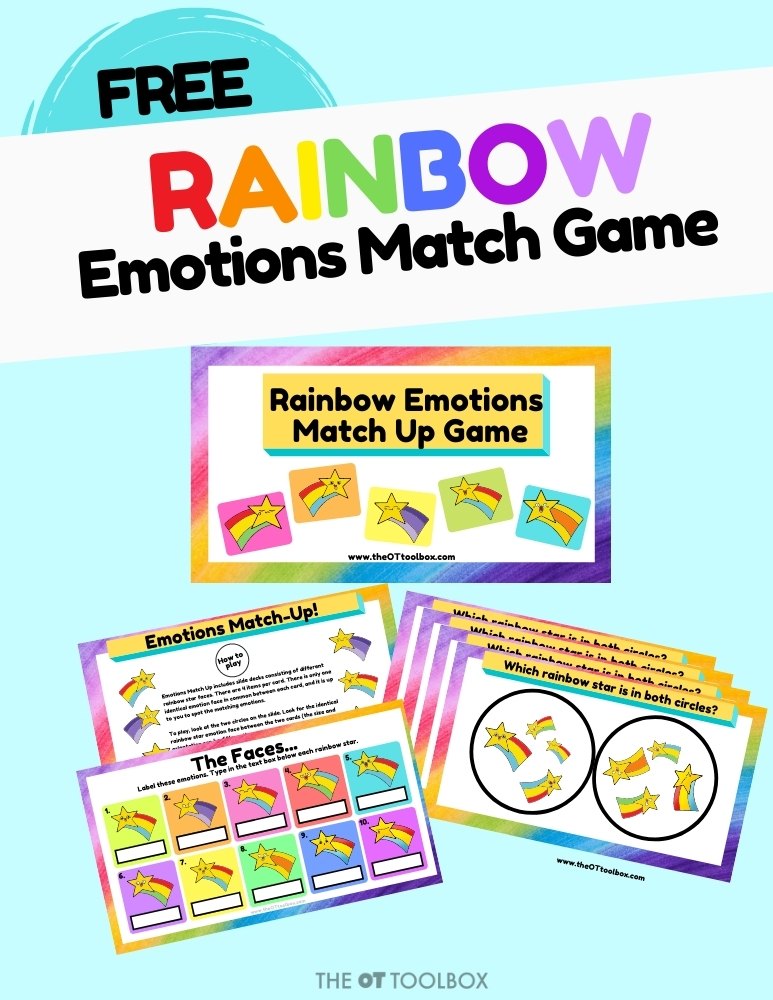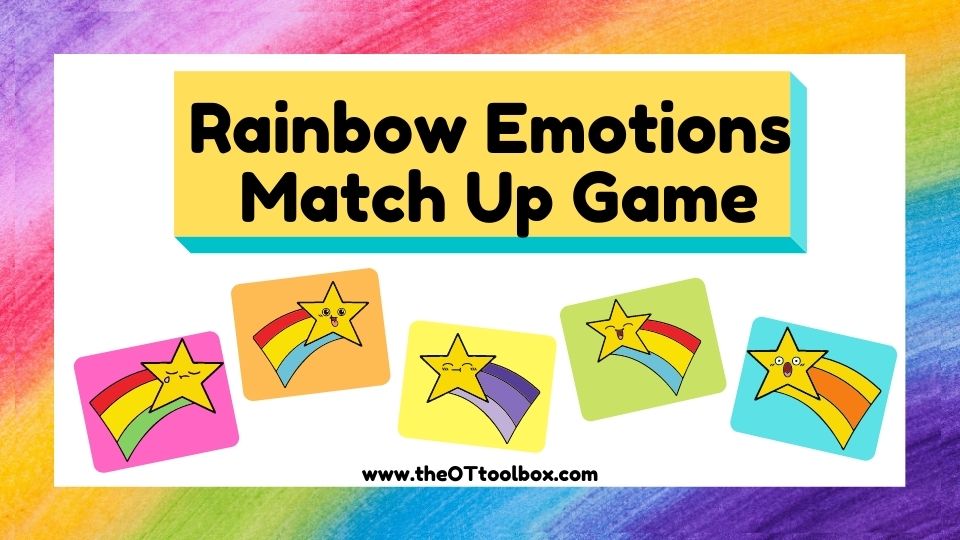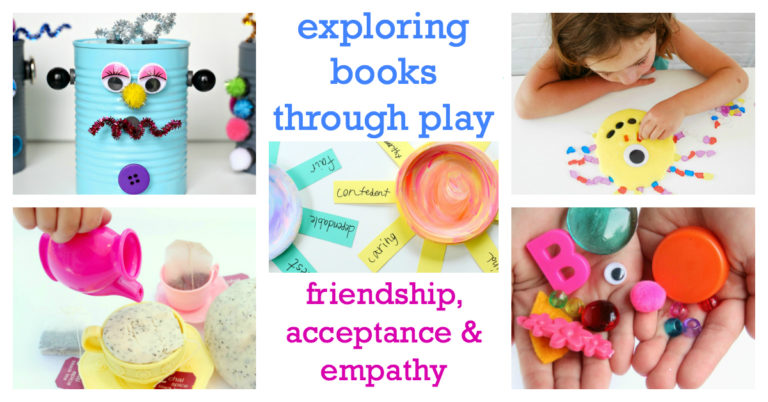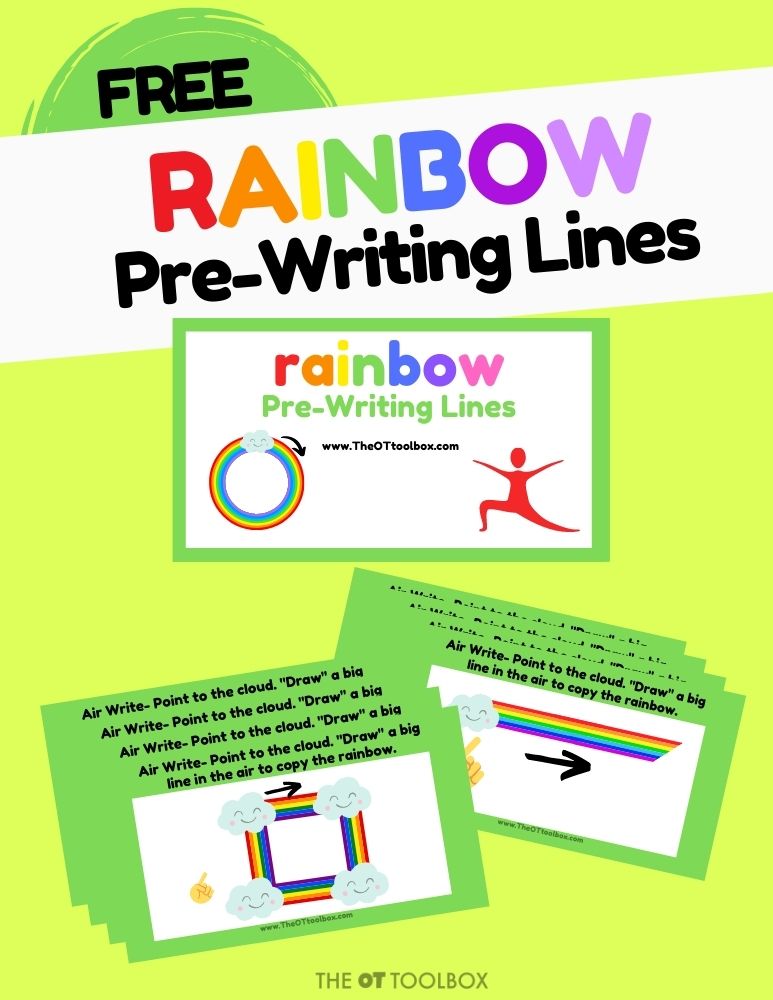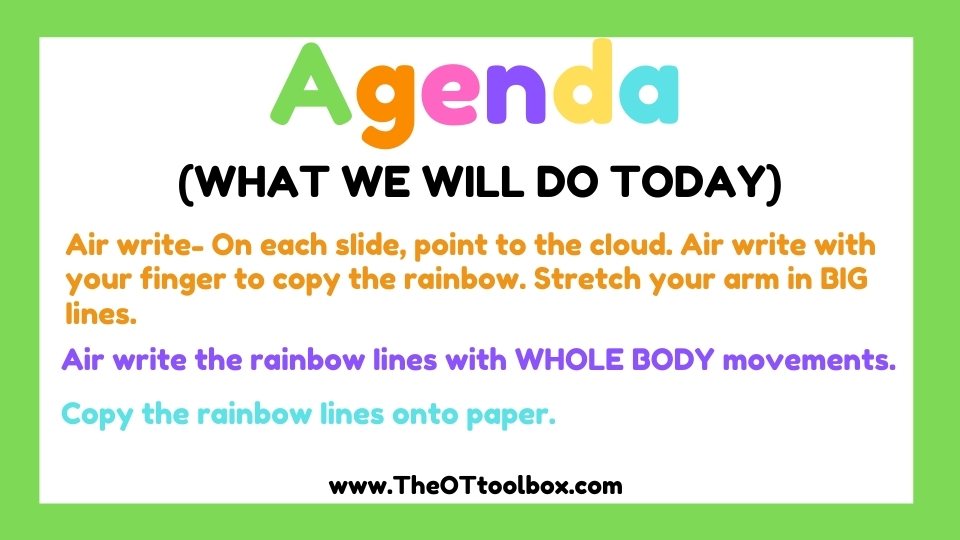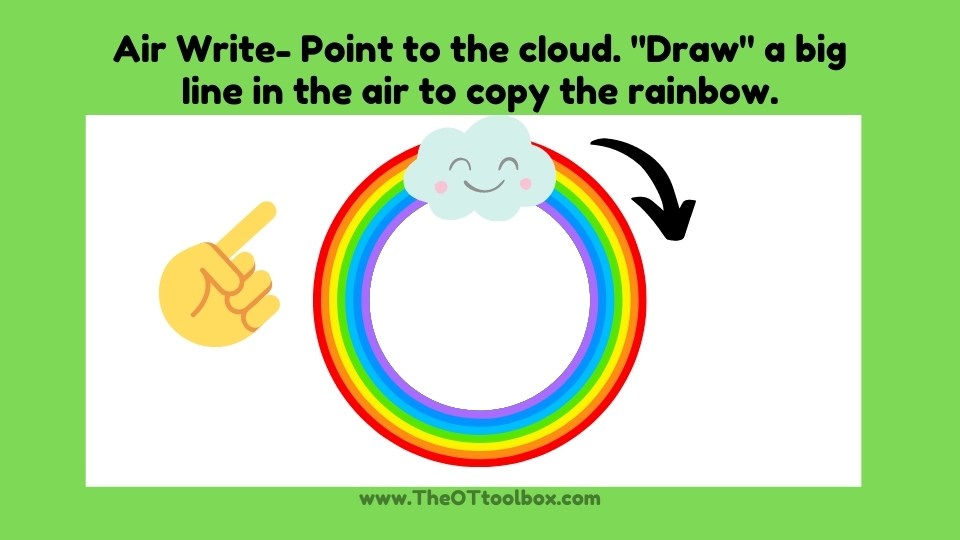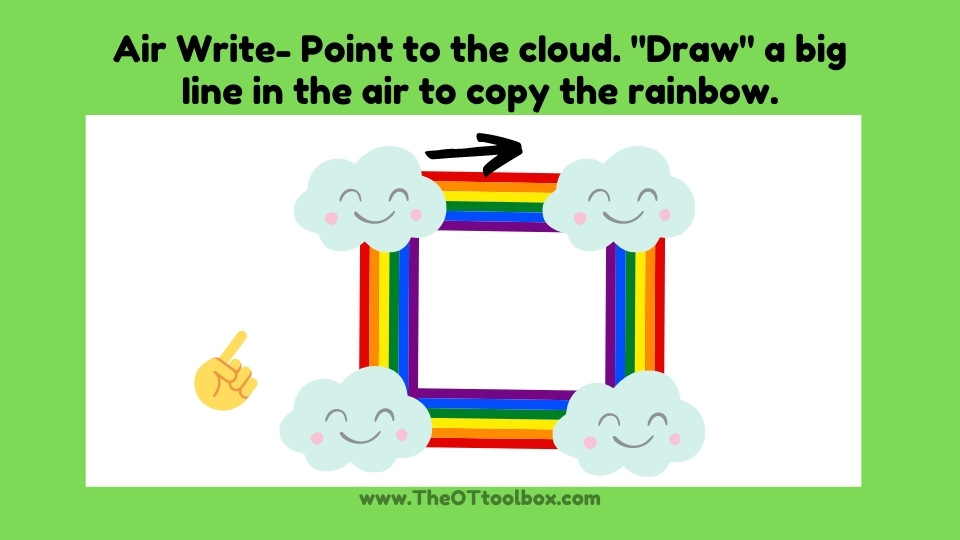This rainbow art drawing help kids with visual motor skills of copying images and figures. When kids demonstrate the ability to copy shapes and forms, they are building the skills needed for copying words, letters, and sentences. This rainbow slide deck is a teletherapy activity that helps with visual motor skills needed for handwriting. Add this free Google slide deck to your occupational therapy teletherapy services (or home programs) and start building skills in visual motor integration.
Starting with drawing milestones is a good idea, especially if you are wondering about using this rainbow drawing activity with a range of ages.
This therapy virtual activity is great to use along with some fruit loop rainbow craft ideas for hands-on rainbow themed fun.
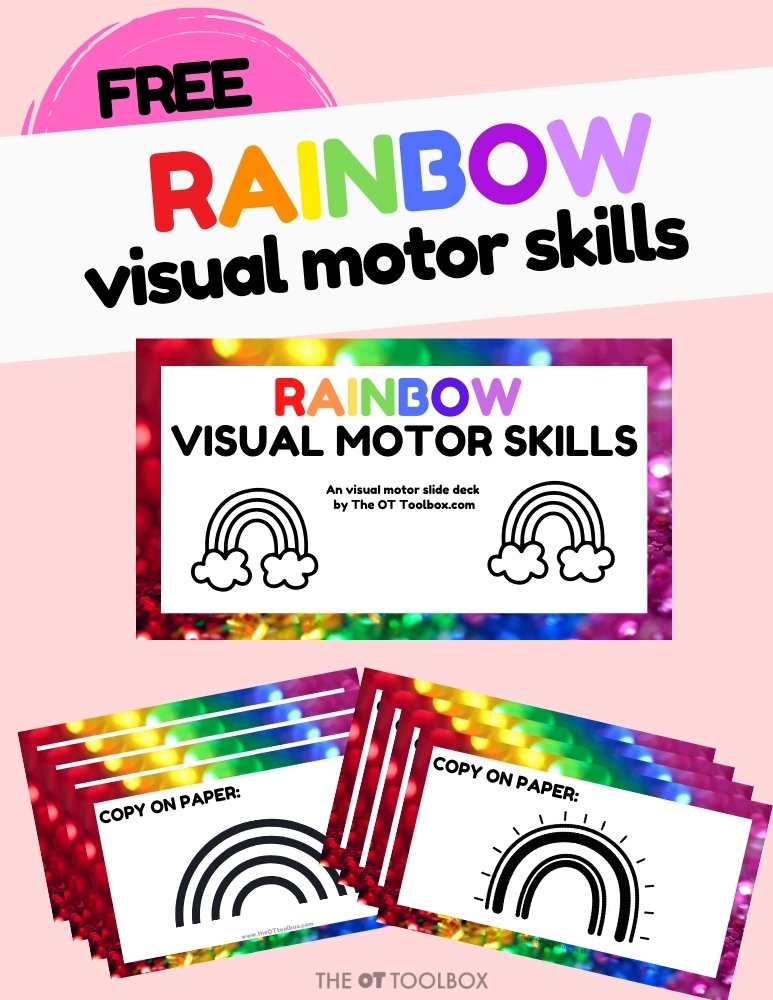
Rainbow Drawing Art
If you take a scroll on YouTube, you’ll find a lot of directed drawing videos that walk kids through “how to draw a rainbow”… or how to draw hundreds of other images, cartoons, and drawing art ideas.
But, one thing that I have been looking for is simple forms that help kids with visual motor skills like copying simple and complex shapes…that are FUN and motivating.
Here’s the thing: when kids copy shapes, they are developing so many visual motor integration skills that translated to forming letters and numbers, copying sentences, and the eye-hand coordination needed to move a pencil in the way it needs to move so that letters and numbers are placed on lines. It’s all connected!
Copying simple lines and shapes are part of pre-writing skills. By the way, be sure to grab this rainbow pre-writing lines Google slide deck. It’s a freebie that you’ll want for your younger or lower level kiddos.
AND, when kids progress to copying more complex shapes, drawings, and forms, they are developing stronger skills in moving the pencil accuracy, spatial awareness, line awareness, and position in space. All of these skill sets are so necessary for handwriting.
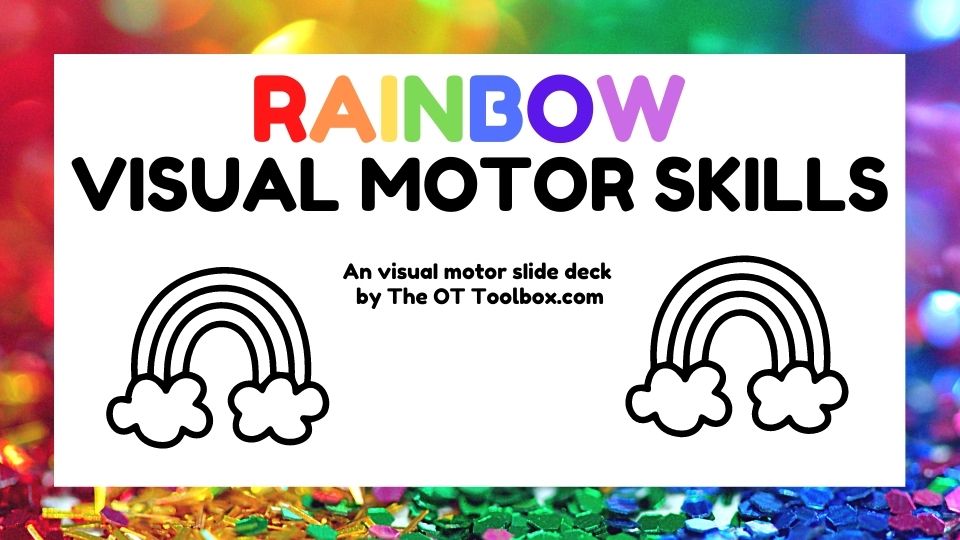
Draw a Rainbow Activity
Kids can copy the different basic rainbow forms and develop these skills using our free rainbow drawing slide deck.
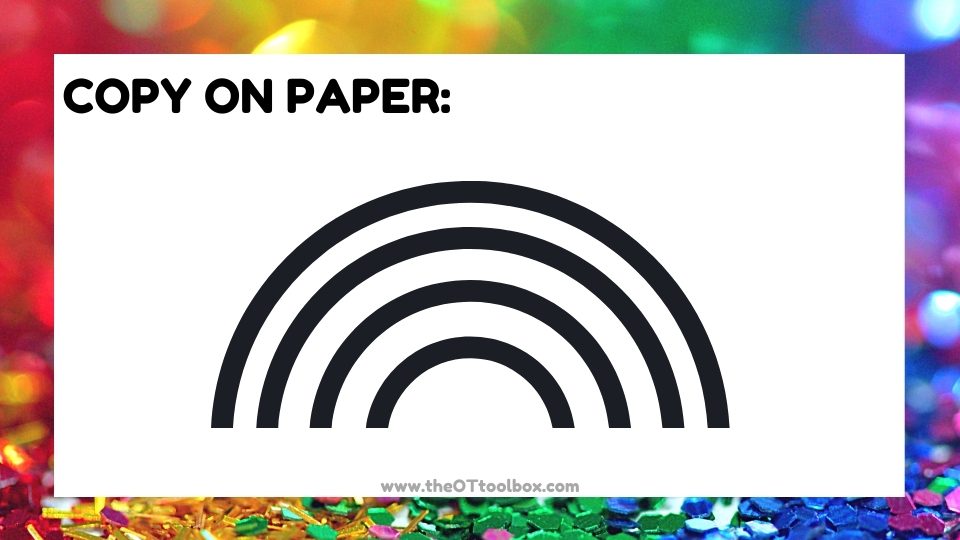
Each slide includes simple or more complex rainbow drawings that challenge kids to copy forms, making this a fun Spring activity that helps to build visual motor skills.
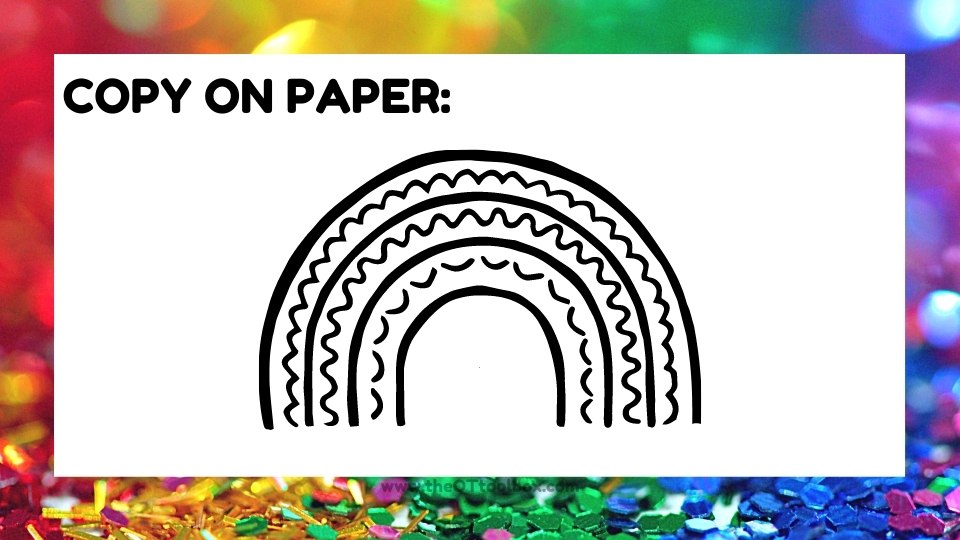
You can ask kids to copy the rainbows onto paper in different ways to extend this activity:
- Ask kids to copy the shape in a specific space.
- Ask kids to fold their paper into columns and rows. They can copy a rainbow form into each space on the paper.
- Ask the child to copy the rainbow in a very large size on a dry erase board or large chalk board to use whole body movements and crossing midline. Air writing is another option.
- Copy the forms with different sensory materials: chalk, water colors, paint, rainbow writing, writing on sandpaper, etc.
- Copy the rainbow form from memory.
- Copy the forms in a very small size.
- Copy the forms into a sensory writing tray. Here are ideas for sensory writing trays.
Want this Rainbow Visual Motor Activity?
Enter your email into the form below to access this free Google slide deck.

Colleen Beck, OTR/L has been an occupational therapist since 2000, working in school-based, hand therapy, outpatient peds, EI, and SNF. Colleen created The OT Toolbox to inspire therapists, teachers, and parents with easy and fun tools to help children thrive. Read her story about going from an OT making $3/hour (after paying for kids’ childcare) to a full-time OT resource creator for millions of readers. Want to collaborate? Send an email to contact@theottoolbox.com.


